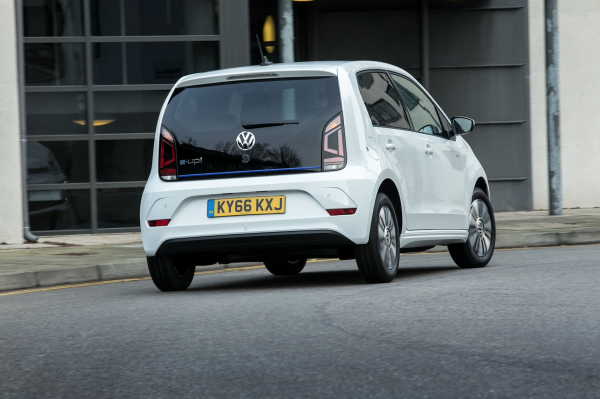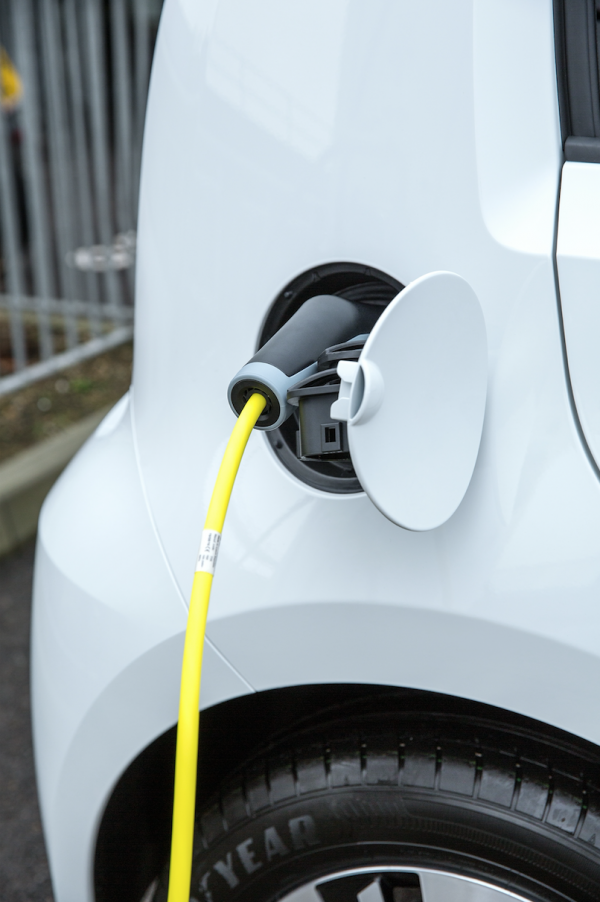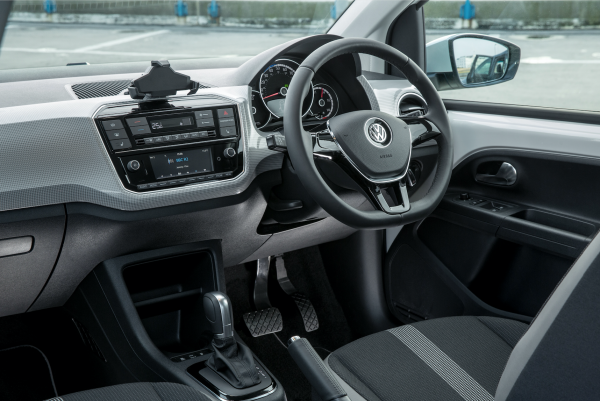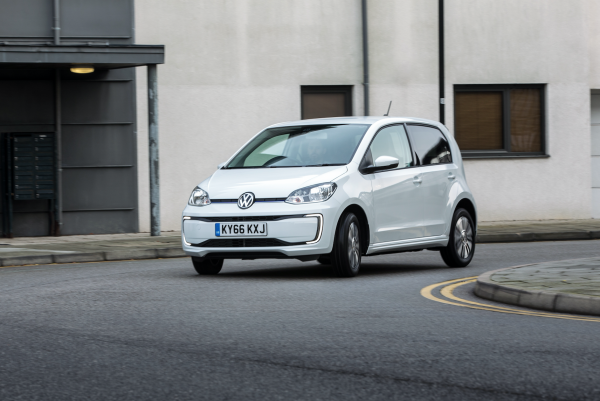Volkswagen e-Up a competent but expensive electric city car
Volkswagen has refreshed its electric version of its popular Up city car. Darren Cassey gets behind the wheel to put it to the test

What is it?
This is the all-electric version of Volkswagen’s excellent little city car, the Up. Here, named e-Up, it is powered by an electric motor. As the latest generation of electric cars start to push past 200 miles of range, at a maximum of just 99 miles the little Up retains the kind of inner-city-only image electric cars have become known for.
That’s not necessarily a problem, though, as the e-Up is perfectly suited to such journeys, since its small proportions, nippy performance and sharp handling make traffic jams slightly less miserable.

The big question that needs answering, though, is does it justify the RRP? With a starting price of £20,780 after the government’s plug-in grant, it’s almost twice as expensive as a top-spec conventionally powered version…
What’s new?
The latest model is a simple refresh, so there’s not a great deal that’s new. The front bumper and rear light clusters are updated, but everything else is as it was. That means it has the same electric motor and battery – and therefore range – as before.
It’s not necessarily a bad thing that it basically looks the same, though, as the Up has proved hugely popular with city car buyers, thanks to its excellent build quality and fun-to-drive character.
What’s under the bonnet?
Power comes from an electric motor that’s fed by an 18.7kWh battery, which is integrated into the floor of the car. VW says it can be recharged in nine hours via a three-pin plug socket, or can get to 80 per cent in half an hour through a fast charger.
With a range of 99 miles, the e-Up doesn’t make a case for itself as a petrol or diesel car replacement like many other latest-generation electric vehicles might. However, for inner-city dwellers looking for something a bit more weather-proof than a bicycle, there can be few better options for keeping warm and dry on the commute.
What’s it like to drive?
Electric power and city cars are a great mix, because the former offers the quick accelerative performance that’s essential for nipping about in congested towns while the Up’s small footprint makes it easy to take advantage of gaps in traffic.

The motor in the e-Up has clearly been tuned to offer conservative acceleration from a standstill, but once you’re up to speed the engine’s more responsive than a petrol-powered car with a similar output.
It’s naturally less impressive at higher speeds, and despite resisting side winds better than you might expect, there is considerable wind noise from the wing mirrors. The electric motors also start to run out of puff around 70mph, so overtaking manoeuvres require plenty of planning.
How does it look?
If you’re familiar with the standard Up, it’s more of the same for the all-electric version. Small, upright proportions are perfectly suited to its job as a city car, and marry the funkier styling popular with young buyers in this segment to Volkswagen’s more grown-up image well. This is an electric car that doesn’t shout about its green credentials.
What’s it like inside?
Despite its attempts at bringing a little bit of fun to the exterior styling, the interior is a rather more drab affair. The cloth seats feel a bit cheap and adjustability isn’t great, but there’s more space than you might expect from such a small car.

The centre console also looks like it’s in desperate need of bringing up to date, with blocky buttons and small screens, but build quality can’t be faulted. A nifty mobile phone holder on the dashboard makes it easy to use satellite navigation, which is available through a VW app.
What’s the spec like?
To justify the fact it’s more than £20,000 for a city car, the specification on the e-Up is pretty good. You get air conditioning and electronic climate control, electric windows, cruise control, parking sensors and more.
Styling-wise, there are also 15-inch alloy wheels, privacy glass and LED daytime running lights, while safety kit includes automatic emergency braking, plenty of airbags for front passengers and an electronic immobiliser.
Verdict
Taken in isolation, the Volkswagen e-Up makes a great case for itself. It’s small and nippy, making it perfect for inner-city driving, while running costs will be minimal thanks to its electric power and zero road tax.

However, at more than £20,000 it’s difficult to justify – you’ve really got to want a zero-emission city car specifically from VW. If you’ve set your heart on an e-Up and can afford it, you won’t be disappointed – just know there are bigger and better cars out there for the money.
FACTS AT A GLANCE
Model: VW e-Up
Price: £20,780 (inc. government grant)
Engine: Electric motor with 18.7kWh battery
Power: 81bhp
Torque: 210Nm
Max speed: 81mph
0-60mph: 12.2 seconds
MPG: N/A
Emissions: 0g/km
Range: 99 miles (NEDC)





